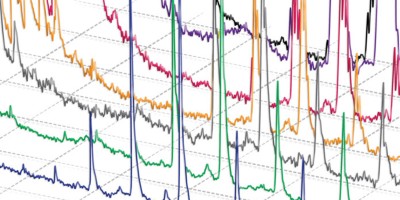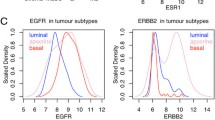Abstract
Establishing a model system that more accurately recapitulates both normal and neoplastic breast epithelial development in rodents is central to studying human breast carcinogenesis. However, the inability of human breast epithelial cells to colonize mouse mammary fat pads is problematic. Considering that the human breast is a more fibrous tissue than is the adipose-rich stroma of the murine mammary gland, our group sought to bypass the effects of the rodent microenvironment through incorporation of human stromal fibroblasts. We have been successful in reproducibly recreating functionally normal breast tissues from reduction mammoplasty tissues, in what we term the human-in-mouse (HIM) model. Here we describe our relatively simple and inexpensive techniques for generating this orthotopic xenograft model. Whether the model is to be applied for understanding normal human breast development or tumorigenesis, investigators with minimal animal surgery skills, basic cell culture techniques and access to human breast tissue will be able to generate humanized mouse glands within 3 months. Clearing the mouse of its endogenous epithelium with subsequent stromal humanization takes 1 month. The subsequent implantation of co-mixed human epithelial cells and stromal cells occurs 2 weeks after humanization, so investigators should expect to observe the desired outgrowths 2 months afterward. As a whole, this model system has the potential to improve the understanding of crosstalk between tissue stroma and the epithelium as well as factors involved in breast stem cell biology tumor initiation and progression.



Similar content being viewed by others
References
DeOme, K.B., Faulkin, L.J., Jr., Bern, H. & Blair, P.B. Development of mammary tumors from hyperplastic alveolar nodules transplanted into gland-free mammary fat pads of female C3H Mice. Cancer Res 19, 515–525 (1959).
Daniel, C.W. & DeOme, K.B. Growth of mouse mammary glands in vivo after monolayer culture. Science 149, 634–636 (1965).
Young, L.J., Medina, D., DeOme, K.B. & Daniel, C.W. The influence of host and tissue age on life span and growth rate of serially transplanted mouse mammary gland. Exp. Gerontol. 6, 49–56 (1971).
Medina, D. & DeOme, K.B. Carcinogen-induced mammary tumors from preneoplastic nodule outgrowths in BALB-c mice. Cancer Res. 30, 1055–1059 (1970).
Outzen, H.C. & Custer, R.P. Growth of human normal and neoplastic mammary tissues in the cleared fat pad of the nude mouse. J. Natl. Cancer Inst. 55, 1461–1466 (1975).
Sheffield, L.G. & Welsch, C.W. Transplantation of human breast epithelia to mammary-gland-free fat-pads of athymic nude mice: influnence of mammatrophic hormones of breast epithelia. Int. J. Cancer 41, 713–719 (1988).
Parmar, H. et al. A novel method for growing human breast epithelium in vivo using mouse and human mammary fibroblasts. Endocrinology 143, 4886–4896 (2002).
Kuperwasser, C. et al. Reconstruction of functionally normal and malignant human breast tissues in mice. Proc. Natl. Acad. Sci. U.S.A. 101, 4966–4971 (2004).
Rebar, R.W., Morandini, I.C., Petze, J.E. & Erickson, G.F. The hormonal basis of reproductive defects in athymic mice: diminished gonadotropin concentration in prepubertal females. Endocrinology 108, 120–126 (1981).
Young, L.J.T. Methods in Mammary Gland Biology and Breast Cancer Research. Ip MMaABB (ed.), pp. 67–74 (Kluwer Academic/Plenum, New York, 2000).
Barcellos-Hoff, M.H. & Ravani, S.A. Irradiated mammary gland stroma promotes the expression of tumorigenic potential by unirradiated epithelial cells. Cancer Res. 60, 1254–1260 (2000).
Ohuchida, K. et al. Radiation to stromal fibroblasts increases invasiveness of pancreatic cancer cells through tumor-stromal interactions. Cancer Res. 64, 3215–3222 (2004).
Tsai, K.K.C., Chuang, E.Y.-Y., Little, J.B. & Yuan, Z.M. Cellular mechanisms for low-dose ionizing radiation-induced perturbation of the breast tissue microenvironment. Cancer Res. 65, 6734–6744 (2005).
Rasmussen, S.B., Young, L.J.T. & Smith, G.H. Methods in Mammary Gland Biology and Breast Cancer Research. Ip MMaABB (ed.), pp. 75–86 (Kluwer Academic/Plenum, New York, 2000).
Acknowledgements
This work was supported by grants from the RB Sackler and Susan Komen Foundations. C.K. is an RB Sackler Scholar.
Author information
Authors and Affiliations
Corresponding author
Ethics declarations
Competing interests
Kuperwasser is a consultant of AVEO Pharmaceuticals Inc. Charlotte Kuperwasser has filed a patent application based on the work reported in this manuscript.
Rights and permissions
About this article
Cite this article
Proia, D., Kuperwasser, C. Reconstruction of human mammary tissues in a mouse model. Nat Protoc 1, 206–214 (2006). https://doi.org/10.1038/nprot.2006.31
Published:
Issue Date:
DOI: https://doi.org/10.1038/nprot.2006.31
- Springer Nature Limited
This article is cited by
-
Functional signaling test identifies HER2 negative breast cancer patients who may benefit from c-Met and pan-HER combination therapy
Cell Communication and Signaling (2022)
-
Newly characterized bovine mammary stromal region with epithelial properties supports representative epithelial outgrowth development from transplanted stem cells
Cell and Tissue Research (2022)
-
Breast tissue regeneration is driven by cell-matrix interactions coordinating multi-lineage stem cell differentiation through DDR1
Nature Communications (2021)
-
Lysyl oxidase enzymes mediate TGF-β1-induced fibrotic phenotypes in human skin-like tissues
Laboratory Investigation (2019)
-
Redirecting Normal and Cancer Stem Cells to a Mammary Epithelial Cell Fate
Journal of Mammary Gland Biology and Neoplasia (2019)





